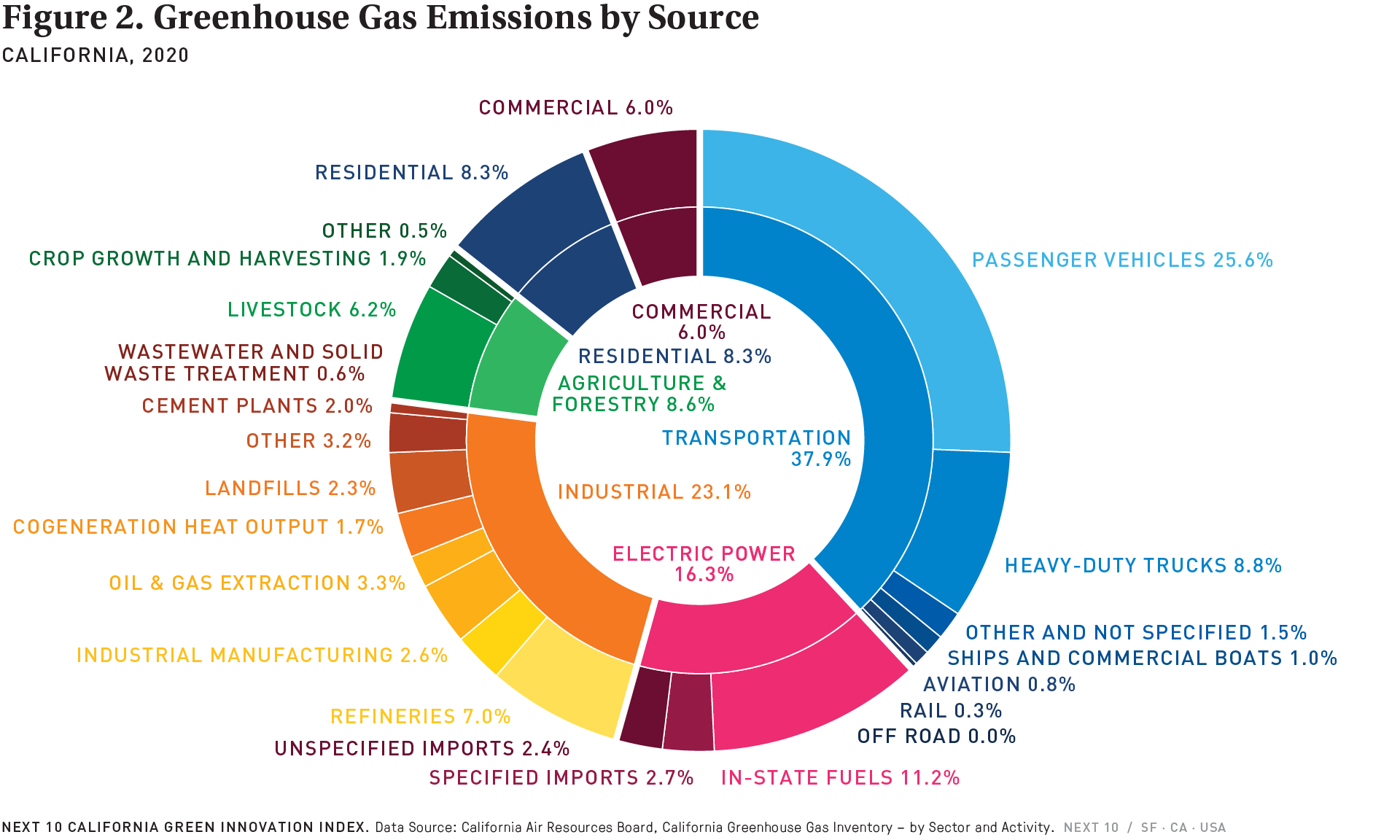Highlight
- The transportation sector has been the largest-emitting sector in California—though the sector’s share declined to 37.9 percent in 2020, down from 41.2 percent in 2019. The decline was mostly from on-road passenger vehicles’ share, which decreased from 31.5 percent to 25.6 percent of the state’s total GHG emissions, due to the COVID-19 stay-at-home orders. Unlike the previous year, when the heavy-duty vehicles subsector was the main contributor to the drop in GHG emissions from on-road vehicles, GHG emissions from this subsector decreased by 8 percent (-2.8 MMTCO2e) from 2019. Despite the slight decline, the sector increased its share of total statewide GHG emissions by 2 percent.
Challenge
- GHG emissions from the commercial and residential sectors continue to climb despite decreases in California’s overall GHG emissions. From 2016 to 2020, these sectors’ share of GHG emissions rose from 5.2 percent to 6.0 percent for commercial and from 6.6 percent to 8.3 percent for residential—a further increase from 5.7 percent and 7.6 percent captured in 2019, respectively. Over time, the main driver of GHG emissions increases in these sectors has been the increasing use of substitutes for ozone-depleting substances (substitutes for ODS) for refrigeration and air conditioning activities, as well as continued reliance on natural gas for heating and cooking in buildings. In 2020 compared to 2019, commercial sector emissions decreased mainly due to the decline captured in hotel (-25.1%) and food services (-18.3%). These subsectors have heavy demand for ozone-depleting substances, such as refrigerants and air conditioning, and are more likely to have rebounded in 2021.
More About the
Carbon Economy
Related Content

